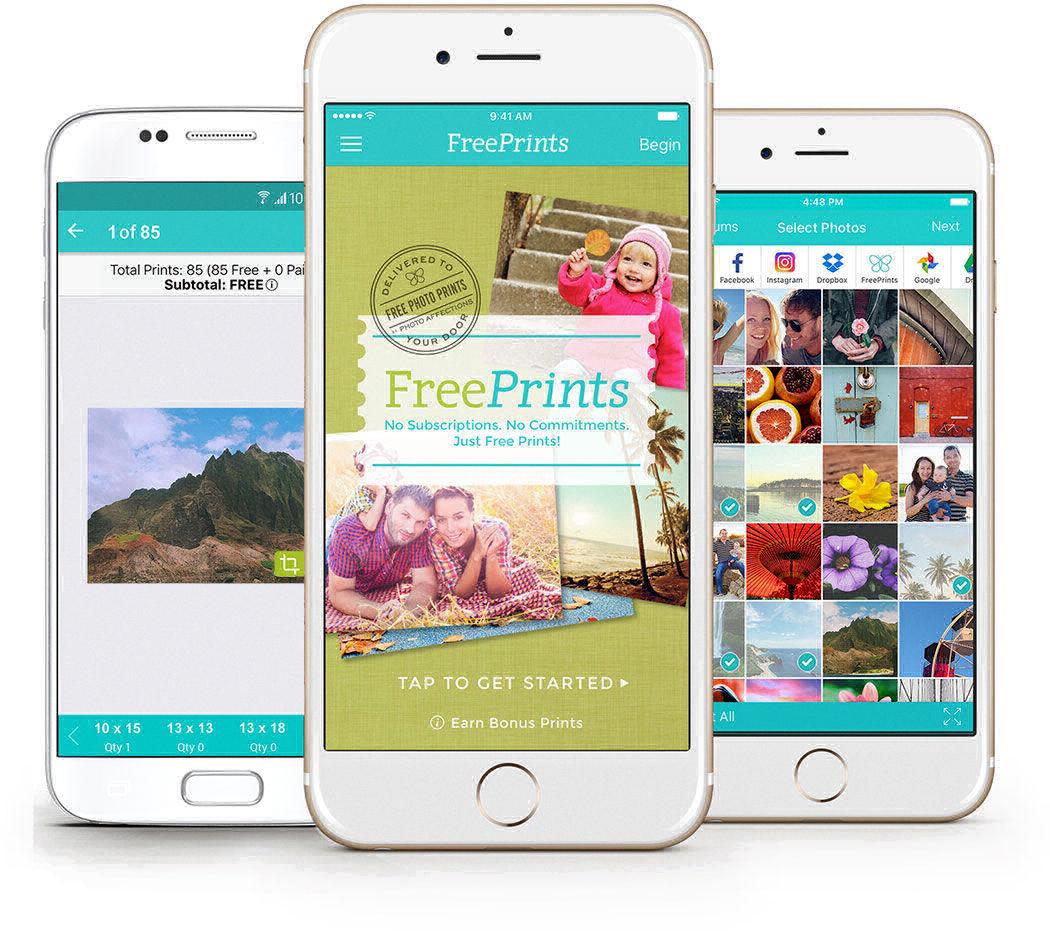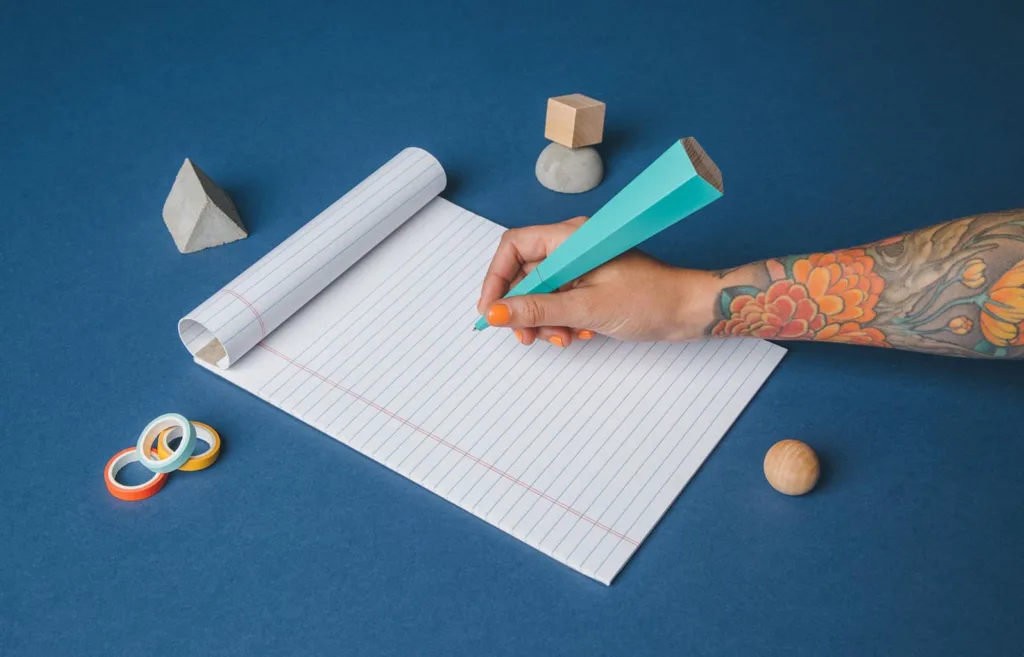When it comes to sending pictures to incarcerated loved ones, there are a few things to consider. First, there’s the cost of printing and shipping. Some services charge up to $9.99 for shipping, which can add up quickly. However, there are alternative services that offer more affordable options for families and friends who want to stay connected with their incarcerated loved ones.
One such service is Pelipost: The Photos-to-Prison App®. This mobile app allows you to send pictures with just a few clicks, and Pelipost takes care of the rest. No more worrying about printing photos, finding envelopes, or paying for postage. With Pelipost, you can easily send photos to your loved one from anywhere.
Another option is Flikshop, which offers an easy and affordable way to send photos and notes to incarcerated loved ones. With Flikshop, all you need to do is add your photo, type a message, and click “Send Postcard”. It’s that simple. Plus, Flikshop understands the importance of mail to those in jail or prison and strives to make it easy for families to stay connected every single day.
Of course, some people sill prefer to print their own photos and send them through traditional mail. That’s where FreePrints comes in. This app allows you to select the photos you want to print and have them delivered straight to your door for a low shipping fee of $4.50. With FreePrints, you can print photos from your phone, Facebook, or Instagram, making it easy to choose the perfect pictures to send to your incarcerated loved one.
It’s important to note that incarcerated individuals typically only receive a mugshot when they arrive at a facility, so any additional photos sent by family and friends can be a welcome reminder of home and loved ones. These services make it easier and more affordable than ever to stay connected with those who are incarcerated.
Whether you choose to use Pelipost, Flikshop, FreePrints, or another service altogether, the most important thing is to stay connected with your incarcerated loved ones. With these affordable and convenient options, there’s no reason not to send photos and stay in touch.
Does FreePrints Ship to Prisons?
FreePrints is a popular online service that allows individuals to order prints of their photographs for free, paying only for shipping and handling. However, when it comes to shipping to prisons, there are some limitations and restrictions.
Firstly, it is important to note that FreePrints does not have any specific policies or restrictions in place that prohibit them from shipping to prisons. However, there are some practical limitations to consider. Many prisons have strict regulations in place regardig what items can be received by inmates, and these regulations can vary from one facility to another.
One of the most common restrictions is on the type of packaging that can be used. Many prisons only allow packages that are shipped directly from a retailer or vendor, and they may require that the package be sealed and unopened. This means that if you order prints from FreePrints and have them shipped directly to a prison, there is a chance that they will be returned or rejected at the facility.
Another consideration is the cost of shipping. FreePrints charges up to $9.99 for shipping, which may be more than some inmates or their families are willing to pay. In contrast, some other services that specialize in shipping to prisons may offer lower shipping rates, such as our service that charges a maximum of $4.50 for shipping.
It is also worth noting that most prisons provide inmates with a mugshot when they arrive at the facility, but this is typically the only photo that they will receive unless a civilian sends them photos. Therefore, if you do want to send photos to an inmate, it may be more practical to have them printed and mailed directly to you, and then you can include them in a letter or package that is sent to the inmate.
While FreePrints does not have any specific policies that prohibit them from shipping to prisons, there are some practical limitations and restrictions to consider. If you do want to send photos to an inmate, it may be more practical to have them printed and mailed directly to you, and then include them in a letter or package that is sent to the inmate. Alternatively, you can use a service that specializes in shipping to prisons and offers lower shipping rates.

Sending Pictures to Inmates for Free: What App Can I Use?
Sending pictures to inmates can be a challenging and time-consuming process, as many correctional facilities have strict guidelines for what can and cannot be sent. However, there are several apps availabe that can simplify the process and help you send photos to your incarcerated loved ones.
One such app is Pelipost: The Photos-to-Prison App®. This app allows you to send pictures to inmates with just a few clicks, making it easy to stay connected with your loved ones even when they are behind bars. Pelipost works with correctional facilities across the United States, so you can use it no matter where your loved one is incarcerated.
To use Pelipost, simply download the app from the App Store or Google Play and create an account. You can then select the photos you want to send, add a message if you like, and hit send. Pelipost will take care of the rest, printing the photos and delivering them to your loved one’s facility.
One of the unique features of Pelipost is that it offers a variety of customization options, allowing you to choose the size and style of your photos, as well as add borders, filters, and other effects. This can be a great way to make your photos more personal and meaningful to your loved one.
Pelipost also offers competitive pricing, with packages starting at just $0.49 per photo. Additionally, the app offers a variety of other products and services, such as greeting cards and care packages, that can help you stay connected with your loved one during their incarceration.
Pelipost is a great option for anyone looking to send pictures to inmates quickly and easily. Whether you want to share family photos, vacation snapshots, or other memories, this app makes it simple and affordable to stay connected with your loved ones behind bars.
Sending Pictures to Someone in Jail for Free Prints
Sending pictures to someone in jail can be a challenging task, especally when you want to make sure that they receive high-quality prints. Fortunately, there are several ways to send pictures to someone in jail for free prints. In this article, we will explore some of the most popular methods.
1. Use FreePrints App
One of the easiest and most convenient ways to send pictures to someone in jail is by using the FreePrints app. This app allows you to select the photos you want to print from your phone or social media accounts like Facebook or Instagram. Once you have selected the photos, you can choose the quantity and order the prints. The app offers up to 85 free prints per month, and you only need to pay for shipping.
To use the FreePrints app, you need to download it from the app store on your phone and create an account. Once you have an account, you can start selecting the photos you want to print and place your order. The app will guide you through the process, and you can track your order to see when it has been shipped.
2. Use Free Photo Printing Services
Another way to send pictures to someone in jail for free prints is by using free photo printing services. Some companies offer free prints to their customers, and you can take advantage of this by signing up for their services. For instance, Shutterfly offers 101 free prints to new customers, and Snapfish offers 100 free prints. You can use these free prints to send pictures to someone in jail.
To use these services, you need to create an account and upload the photos you want to print. Once you have uploaded the photos, you can select the quantity and place your order. The prints will be shipped to your address, and you can then send them to the person in jail.
3. Use Inmate Photo Services
Some jails offer inmate photo services that allow you to send pictures to someone in jail. These services are usually operated by third-party companies, and they charge a fee for the prints. However, some companies offer free prints to first-time customers.
To use these services, you need to visit the website of the company that operates the inmate photo service for the jail. You will need to create an account and upload the photos you want to print. Once you have uploaded the photos, you can select the quantity and place your order. The prints will be shipped to the jail, and the person in jail can then pick them up.
Sending pictures to someone in jail for free prints is possible with the use of the FreePrints app, free photo printing services, and inmate photo services. These methods are convenient and easy to use, and they allow you to send high-quality prints to your loved ones in jail.
The Best App for Sending Pictures to Inmates
When it comes to sending photos to incarcerated loved ones, there are a variety of apps available. However, one app that has gained popularity for its ease of use and affordability is Flikshop.
Flikshop alows users to easily send photos and notes to inmates directly from their mobile device. The app is available for both iOS and Android and can be downloaded for free.
To use Flikshop, simply add your photo, type a message, and click “Send Postcard”. The app offers a variety of features, including the ability to schedule postcards to be sent at a later time, the option to add multiple recipients, and the ability to save addresses for future use.
Flikshop’s pricing is also very reasonable, with each postcard costing only $0.99. Additionally, the app offers bulk pricing for users who wish to send multiple postcards at once.
Flikshop is a great option for anyone looking to easily and affordably send photos to incarcerated loved ones. Its user-friendly interface and variety of features make it a top choice among similar apps.
Sending Pictures to Inmates Using Shutterfly
Shutterfly is a popular online service that alows users to create and order personalized photo gifts and prints. Many people have wondered whether or not Shutterfly can be used to send photos to inmates in correctional facilities. The short answer is yes, you can use Shutterfly to send pictures to inmates, as long as you follow the rules and regulations set by the facility.
Most correctional facilities have strict guidelines for what types of photos are allowed to be sent to inmates. In general, photos must not contain any graphic or violent content, and must be 4×6 or smaller in size. Some facilities may also have restrictions on the number of photos that can be sent at one time, or may require that they be printed on specific types of paper.
If you are planning to use Shutterfly to send photos to an inmate, it is important to check with the facility first to make sure that your photos comply with their guidelines. Additionally, you should be aware that some facilities may require that photos be sent directly from the printing service to the inmate, rather than being mailed to you first.
While it is possible to use Shutterfly to send photos to inmates in correctional facilities, it is important to follow the rules and regulations set by the facility. Make sure to check with the facility before sending any photos, and be aware of any restrictions on content or format.

How Inmate Photos App Facilitates Inmate Identification
The Inmate Photos app is an easy and convenient way to send photos to your loved ones who are incarcerated. Here’s how it works:
1. Upload photos: You can add photos from your phone, Facebook, and Instagram to the Inmate Photos app. This allows you to select the images you want to send to your loved ones.
2. Order prints: Once you have uploaded your photos, they will be printed using high-end and state-of-the-art printers by the Inmate Photos team. You can choose the size and number of prints you want to send.
3. Delivery: The printed photos will be delivered to the inmate’s facility. Inmate Photos works with correctional facilities to ensure prompt and secure delivery of photos.
4. Photos arrive: Your loved one will receive the printed photos at the facility. They can keep the photos in ther personal belongings or display them in their living quarters.
The Inmate Photos app makes it easy for you to send photos to your incarcerated loved ones. You upload your photos to the app, order prints, and Inmate Photos takes care of printing and delivering them to the facility. Your loved ones will receive the printed photos and can keep them as a cherished reminder of you and your life outside of prison.
Using Apps to Connect with Inmates
If you have a loved one who is incarcerated, staying connected with them can be a challenge. Fortunately, technology has made it easier for you to maintain contact with your incarcerated friend or family member. One such technology is the JPay app, a popular app used for inmates.
JPay is a free mobile app that provides a range of services for inmates, including the ability to send and receive emails, photos, eCards, and videograms. The app also allows you to quickly send money to an inmate’s trust account, which they can then use to purchase phone minutes or other items from the commissary.
In addition, JPay offers a tablet program that allows you to purchase a tablet for your incarcerated loved one. The tablet program comes with a range of features, including access to educational materials, music, and games. You can also fund your loved one’s media account, which they can use to purchase movies, TV shows, and other entertainment content.
To use the JPay app, you will need to create an account and link it to your loved one’s account. Once you have done this, you can use the app to send messages or transfer funds.
The JPay app is a convenient and reliable way to stay connected with your incarcerated loved one. Whether you want to send a quick email, transfer funds, or provie access to entertainment content, JPay has you covered.
Sending Pictures to Prisons
Sending pictures to prisons can be a complicated process due to the strict rules and regulations in place to prevent the entry of contraband. However, there are a few ways to send pictures to an inmate in a safe and legal manner.
1. Use a photo printing service: Many prisons allow friends and family of inmates to use photo printing services to send pictures directly to the facility. These services typically require you to upload your photos online or through an app, and then the photos are printed and mailed to the inmate. Some popular photo printing services for prisons include FreePrints, TouchNote, and Walgreens Photo.
2. Send photos through mail: If the prison allows it, you can also send photos to an inmate through the mail. Make sure to check the facility’s guidelines for sending mail, as they may have specific rules abut the size and type of photos that are allowed. Photos should be printed on standard photo paper and should not contain any nudity, violent or gang-related content.
3. Use a third-party service: There are also third-party services that specialize in helping people send photos to inmates. These services typically work by allowing you to upload your photos online, and then the service prints and mails the photos to the inmate on your behalf. Some popular third-party services include Flikshop, Inmateaid, and JPay.
When sending photos to prisons, it’s important to follow all of the facility’s rules and regulations to ensure that your photos are not rejected or confiscated. Make sure to double-check the guidelines before sending any photos, and consider using a photo printing service or third-party service to make the process easier and more convenient.
Sending Photos to Prisoners
Sending photos to prisoners is a great way to stay connected with them during their time of incarceration. However, when it comes to sending photos of prisoners themselves, the rules can vary depending on the specific prison.
In some prisons, prisoners are not allowed to receive photos of themselves, including family photos that include them. This is because the photos coud potentially be used for fraudulent purposes, such as trying to pass off as another inmate or trying to manipulate the prison staff.
It’s important to check with the specific prison’s rules and regulations before sending any photos to a prisoner. If the prison does allow photos of prisoners, it’s important to make sure that the photos are appropriate and not explicit or pornographic in nature.
In addition to these guidelines, it’s important to consider the size and format of the photos. Some prisons may have specific size or format requirements, and failing to meet these requirements could result in the photos being rejected.
To summarize, sending photos to prisoners can be a great way to stay connected, but it’s important to check with the specific prison’s rules and regulations before sending any photos. If photos of prisoners are allowed, make sure they are appropriate and meet any size or format requirements.

Source: saveonprisoncalls.com
Do Freeprints Viewers Have Access to My Photos?
FreePrints takes the privacy and security of your photos very seriously. When you upload your photos to the app or website, only you have access to them. The FreePrints team does not have any access to view or download your photos, and they are not shared with any third parties.
Furthermore, FreePrints uses best-in-class security solutions to ensure that your photos remain protected. This includes encryption of all data transmitted between your device and FreePrints servers, as well as secure storage of your photos on teir servers.
No one at FreePrints can see your photos unless you choose to share them. Your photos are always your photos, and you can rest assured that they are safe and secure with FreePrints.
Sending Pictures to a Boyfriend in Jail
When it comes to sending pictures to a loved one who is incarcerated, it is important to keep in mind that correctional facilities have strict rules and regulations regarding what is allowed. Generally speaking, sexually explicit or suggestive photos are not permitted, and can result in disciplinary action for both the sender and the recipient.
To avoid any issues, it is best to stick to photos that are fully clothed and do not depict any nudity or suggestive poses. This means avoiding photos that show cleavage or any othr kind of intimate body parts.
Additionally, it is important to consider the content of the photo. While it may seem harmless to send a selfie or a photo of yourself with friends, it is important to avoid any images that could be seen as evidence of illegal or inappropriate behavior. This means avoiding photos that show drug use, weapons, or any other kind of illegal activity.
If you are unsure about whether a photo is appropriate to send, it is best to err on the side of caution and choose a different image. Remember that the goal is to stay connected with your loved one, and that can be done through other means such as letters or phone calls.
Sending Pictures to Jail
When sending pictures to an inmate in jail, it is important to follow cerain guidelines to ensure that the photos are accepted by the correctional facility. First and foremost, the photos should be no larger than 4″x6″. This is because larger photos may pose a security risk or be too large to fit in the inmate’s storage space.
It is also important to include the inmate’s name and ID number on the back of the photo in pen. This helps the mail room staff to properly identify the inmate and ensure that the photo is delivered to the correct person.
When selecting photos to send, it is important to avoid any images that contain nudity or sexually suggestive material. Additionally, hand gestures and tattoos may not be allowed if they have gang implications.
To summarize, acceptable photos to send to an inmate in jail should be 4″x6″ in size, have the inmate’s name and ID number written on the back, and should not contain any nudity, sexually suggestive material, or gang-related imagery.
Is Ameelio a Free Service?
Ameelio Mail is free for incarcerated individuals and ther loved ones who want to send mail to them. This is because Ameelio is dedicated to providing affordable and accessible mail services for those who need it the most. However, Ameelio also offers additional features and services that can be purchased, such as sending postcards or scheduling recurring mail. These features are available for a small fee, but the basic service of sending letters and photos remains free for everyone. It’s important to note that Ameelio is a non-profit organization, so any revenue generated from these additional services goes towards improving and expanding their services to reach even more people in need.

Cost of Flikshop
Flikshop is a mobile application that allows users to send postcards to their loved ones who are incarcerated. The cost of sending a postcard through Flikshop is just 99 cents per postcard. This makes it an affordable option for those who want to stay connected with their incarcerated loved ones without breaking the bank.
It is important to note that Flikshop also offers subscription options for those who want to send multiple postcards. The subscription plans range from $9.99 for 10 postcards per month to $99.99 for 150 postcards per month. These subscription plans can provide additional savings for users who regularly send postcards through the app.
The cost of sending a postcard through Flikshop is 99 cents per postcard, and there are also subscription options aailable for those who send multiple postcards.
Sending Pictures Through JPay
JPay allows you to send pictures as attachments in your emails. However, it’s important to note that not all image formats are supported by the platform. The supported image formats are as follows: jpg, jpeg, png, gif, and bmp. This means that if you want to attach an image to your JPay email, it shold be in one of these formats.
Additionally, it’s worth noting that the size of the image also matters. Large images may take a longer time to upload or may not upload at all. Therefore, it’s recommended to resize the image before attaching it to the email.
JPay allows you to attach images to your emails, but you need to ensure that the image is in a supported format and is of an appropriate size to avoid any issues.
Conclusion
Sending photos to incarcerated loved ones is an important way to maintain a connection with them and provide them with a sense of comfort and support. While there are a variety of services available, it is important to consider the cost and convenience of each option. Freeprints offers a convenient and affordable option for printing and shipping photos, with shipping costs that are significantly lower than other services. Additionally, Pelipost and Flikshop provide easy-to-use apps that allow for quick and simple photo sharing. No matter whih service is chosen, sending photos to loved ones in prison is a meaningful way to show that they are not alone and that they are loved and supported.
